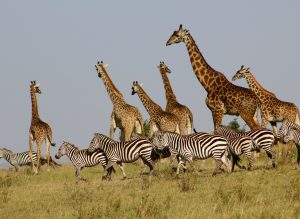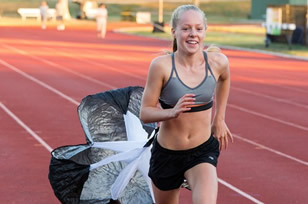-
LOAD MANAGEMENT, TRAINING AND STRENGTH -
Global sport has transformed into an entertainment phenomenon and a multi-billion dollar industry in the last few decades. The popularity of sport has increased dramatically and this has had a flow-on effect at the grassroots level of kids sport.
The professionalization of sport has created high performance programs that are based on science and research. Whilst these systems are necessary at the elite level, we are seeing an increased demand for juniors to compete at a higher level at a younger age in many sports. Soccer and tennis are great examples with both sports having academy programs to increase the hours of training.
We have seen a major shift to early sport specialization which can be detrimental to long term development and success for young athletes. Whilst talented juniors are eager to progress quickly, simply increasing their training loads will not produce the best results. This is a recipe for increased injury risk and burnout.
The challenge for parents is trying to manage the demands of the sport coaches, the athlete, school teachers and maintaining balance in the family unit. This is a complex problem. However, with the right support team the potential for success is multiplied.
LOAD MANAGEMENT
This is the first major piece in the puzzle. Doing more is not always the key to results. It is important to consider every activity undertaken by junior athletes in their training week. This includes factors such as school sport, social activities and anything else that puts load on young bodies.
As their bodies grow and develop they progress through a multitude of phases when their muscles, joints and tissues are at a higher risk of injury. If the training load is increased at this time the injury risk is multiplied. For example, when a young basketballer is selected in a state squad there are always additional trainings scheduled which increases loads. Something to consider here would be reducing the training load in domestic or school competitions for the phase of state training. If these modifications are not made adding 1-2 high intensity basketball sessions into an already busy week could lead to significant issues.
Talented junior athletes are highly motivated and often willing to push their bodies. That’s part of their drive to succeed. However, when they are still developing it is essential that they learn to monitor their bodies appropriately and respect the need for recovery and rest.
TRAINING
Junior athletes should have multiple facets to their training plan. Simply practicing or competing in their chosen sport will not develop strong athleticism and a stable body. It is essential that they continue to focus on fundamental motor skills and strength. The crucial components include: conditioning, stability, core, strength, balance and dynamic motion.
It is vital that there is specialist input into these aspects of training. Advice from specialists that are not directly related to the sports specific coaching staff is valuable. It provides an aspect of objectivity that focuses on the overall development of the athlete. This is common practice in professional high performance environments where a team of coaches, strength and conditioning specialists, dieticians, psychologists and medical staff all work together to achieve the maximum performance outcomes for the athletes.
For junior athletes, it is important to find suitable professionals who can be consulted when required during development. The amount of sports specific skills training must be incorporated with suitable levels of strength, core, balance, recovery and rest.
STRENGTH
Junior athletes should be undertaking strength training if they are playing high level sport. This type of training should only be undertaken with a qualified professional. It is perfectly safe for kids to do strength work that is suitably designed for their individual needs. It must always be supervised and monitored with the necessary modifications implemented when appropriate.
Junior athletes have huge variations in their bodies size and speed of development. In any age group you will find the giraffes and zebras who will have vastly different training needs. The giraffes are tall and lean and the zebras are more compact with a stockier build. Both groups have their own strengths and weaknesses which must be considered in training.

Appropriate strength work will not only maximize performance it will also play an important role in injury prevention. We need to focus on developing athleticism and symmetry in dynamic motion. Often sports will place a greater demand on the dominant side of the body and it's important to ensure that this is minimized with appropriate training.
Junior athletes are motivated and driven to succeed. It is therefore vital to monitor the overall loads being placed on their bodies and teach them to have fun with their sport. Ambition is excellent but success in sport should never be achieved at the expense of health, happiness and a balanced lifestyle.

